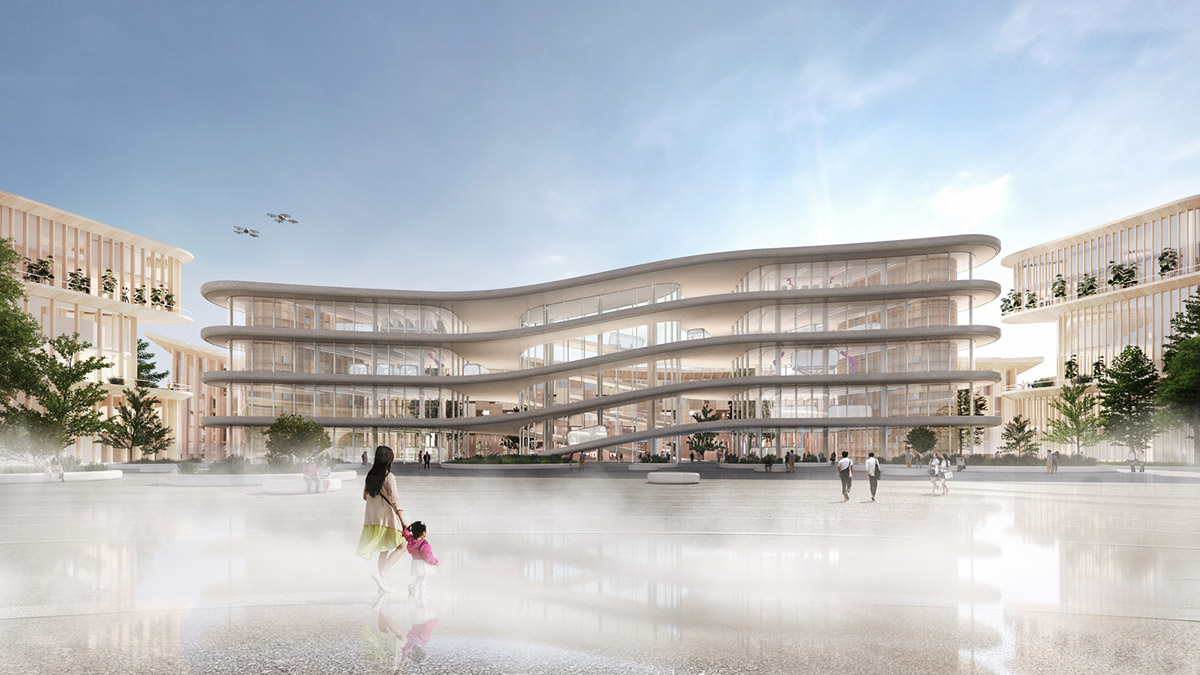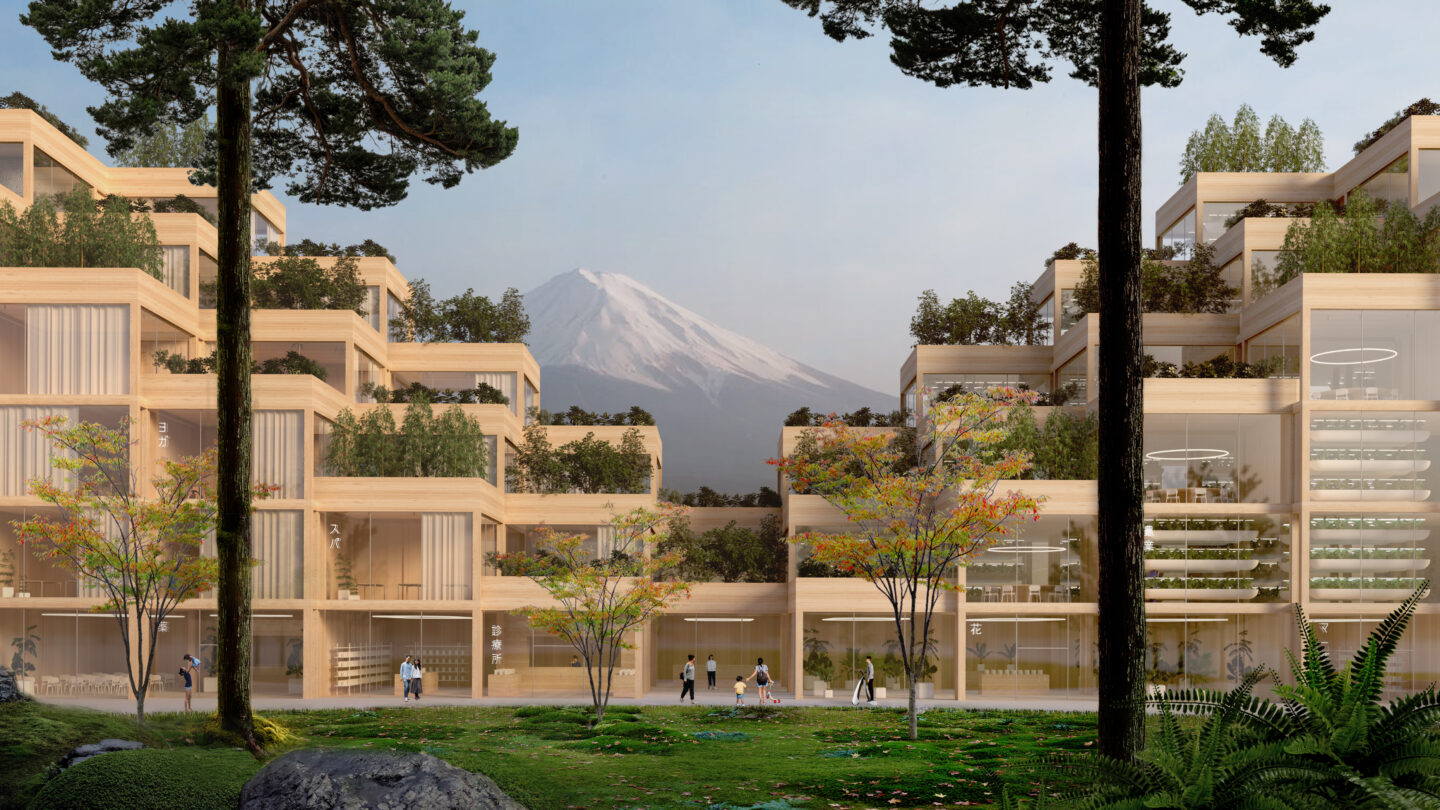Empowering your business with a modern mindset
IMD’s Robert Hooijberg explains why empowerment should be integral to organizational design....
5 July 2023 • by Niccolò Pisani in Innovation
How Toyota is using a revolutionary new “test course for mobility” to reinvent an automotive future ...
For decades, vehicle design and production took place in dedicated facilities at the headquarters of an automaker.
From drawing board to “proving ground”, where new models would be put through their paces, the process of producing new models would happen at the facilities owned by a company like Toyota, or its global rivals General Motors, Ford Motor Company, and Volkswagen.
But, even before the burst of the COVID-19 pandemic, the automotive industry was facing the most profound transformation in its history. Two main factors were contributing to such disruption: seamless connectivity due to rapid software development and the desperate need for environmentally friendly energy solutions. To future-proof itself and remain on the frontier of these profound changes, Toyota – one of the world’s largest automotive companies – committed to transforming itself from an automotive company into a mobility company.
To do so, in 2020, Toyota came up with an innovative re-invention of product development. The company decided to design and build an entire city where inventors could freely develop and test technologies such as autonomy, mobility as a service, robotics, and smart home-connected technology with real people experiencing the innovations. Residents of the city would be expected to contribute to the inventions by sharing experiences and insights into what effectively would be an urban laboratory.
This new city would provide opportunities for Toyota to collaborate with other business partners and to invite scientists and researchers from around the world to come and work on their projects for a few months at a time – or for however long they pleased.
The name of this revolutionary concept? Toyota Woven City, in a nod to the company’s origins as a business making looms to weave fabric. Sakichi Toyoda, Toyota Group’s founder, invented the first power loom to help his mother weave cloths. Sakichi’s philosophy of helping others has been handed down to Toyota employees and the Woven City community.
Woven City was located at a former Toyota production plant on a 175-hectare site at Higashi-Fuji in Japan, near Mount Fuji. Toyota’s vision for Woven City was to “Expand mobility. Enhance humanity. Engage society.” Expanding the definition of “mobility” beyond car transportation, this focused on the opportunity that mobility would bring emotional moments that move people’s hearts.
The vision was therefore to move beyond hardware and software by becoming a platform company that would build towards its goal of fundamentally transforming into a mobility company.
Woven City was unveiled at the 2020 Consumer Electronics Show (CES), when a growing number of cities around the world started developing programs to deploy technology solutions for urban living. Since then, cities have made strides in developing ways to enhance connectivity and enable new services, including in urban mobility, for example with electric and autonomous buses.
Toyota’s motivation for building Woven City also had a company-specific rationale as the automotive industry was facing the most profound transformation in its history.
First, environmental regulations in multiple countries were banning sales of fossil-fuel-powered vehicles. This forced automakers to develop emission-free vehicles and increase their investment and R&D in hybrid, electric, and hydrogen-powered vehicles.
Second, the rapid emergence of new technologies, such as artificial intelligence, faster connectivity, and big data, was pushing automakers to further invest in autonomous vehicles and new business models to address customer preferences such as car-sharing. This was known as the “CASE” – connected, autonomous, shared, and electrified – era.
While Toyota had demonstrated its excellence in producing quality and affordable cars and selling them around the world – the “hardware” side of mobility – the next frontier would involve developing the “software” side. And building software required entirely different skills.
A software-first approach was key to bringing hardware and software elements together, which meant designing architectures that enabled software and hardware components to be developed independently.
This approach had two advantages: reusability, where value was added by creating algorithms and services that could be deployed on many different types of vehicles and software; and the ability to upgrade both hardware and software. Just as smartphones could be upgraded with new applications, new software, or security fixes, connected mobility would have the same potential.
The vision was therefore to move beyond hardware and software by becoming a platform company that would build towards its goal of fundamentally transforming into a mobility company. This would also future-proof Toyota, allowing it to remain at the forefront of these profound changes.
The company in 2018 created “Toyota Research Institute Advanced Development, Inc. (now known as “Woven by Toyota”), a subsidiary whose mission was to establish a lead in industry transformation and innovate in technology and software development. Daisuke Toyoda, Akio’s son, was appointed senior vice president. This role included the execution of the Woven City project.

“No matter how high the wall is, if you always keep climbing as high as you can, you will one day get over it.”- Daisuke Toyoda, Senior Vice President of Woven by Toyota
James Kuffner, former Chief Digital Officer at Toyota Motor Corporation, was appointed Chief Executive Officer. “What we really aim for is how we can create excellent software and excellent hardware together,” he said. “Some people have misinterpreted ‘software first’ as meaning that software is more important than hardware. But the reality is we need both to have high-quality safe products.”
Daisuke’s responsibility for this part of the project reflected the fact that every generation of the Toyoda family has played a significant role in the company’s transformation, as well as its mission to contribute to communities and society at large – often pioneering the pursuit of unconventional dreams.
Importantly, while Woven City was often mentioned in the context of smart cities, Daisuke has always emphasized that Woven City is profoundly different from a smart city, containing many more radical innovations than any other city projects.
Collaboration with industry partners would be key to success, to bring the vision from the drawing board to practical reality.
Toyota and Japanese telecommunications group NTT Corporation agreed to jointly develop a Smart City Platform, which consisted of data management and information distribution, and a digital twin based on such data to produce urban development simulations.
Toyota, Woven by Toyota and Japanese energy group ENEOS partnered in 2021, with ENEOS committing to produce “green hydrogen” − hydrogen derived from renewable energy using electrolyzers – and supplying it to Woven City for use at a fuel cell generator, thus contributing to the use of clean energy.
In a related development, Woven by Toyota and Toyota collaborated with Rinnai Corporation, a Japanese company that makes energy-efficient energy appliances, on a new application for hydrogen in food preparation. The goal was to contribute to carbon neutrality and popularize more sustainable approaches to cooking, in this case with hydrogen-powered heating methods in and around Woven City.
Healthy eating was also part of the Woven City concept. Toyota teamed up with Nissin Foods, a large Japanese food company, on finding ways to expand food choices for people like its residents by offering meals aimed at improving overall health as well as by using advanced analytics to leverage the data gathered about consumption to offer meals based on individual requirements.

Daisuke fostered diversity and inclusion, self-experimentation, seamless communication, and mutual respect in Woven City management. His “never give up” attitude was central to the nurturing of this ground–breaking project.
“I believe that there will always be times in our lives when we have to overcome walls,” he said. “No matter how high the wall is, if you always keep climbing as high as you can, you will one day get over it.”
Yet as the project gained visibility and progressed beyond its conceptualization, Daisuke knew there were important challenges that still had to be addressed. With rapidly growing teams, increasing expectations from stakeholders, and delivery deadlines coming closer, Daisuke and his team identified a few crucial themes that had to be carefully addressed as the project moved forward.
Woven City had expanded rapidly, with members joining from Toyota and across the globe, including from Silicon Valley in California. While this brought together the brightest and the best talent, they came with diverse styles of working, expectations, ambitions, and aspirations.
Toyota’s deeply rooted style of working has been passed down to all generations of Toyota leaders. The Toyota Way as described in the book by Jeffrey K. Liker encapsulatesby the “4Ps”: philosophy, process, people and partners, and problem-solving.
The philosophy led to long-term thinking, the embedding of a waste-elimination process, development of a culture in which people are regarded as partners who respect and challenge each other and grow together. Problem-solving is also a process of continuous improvement and learning.
Silicon Valley – one of the world’s leading centers for technological innovation – had its own culture and problem-solving mentality, with a strong focus on speed of execution aimed at delivering solutions rapidly, collecting user feedback, and bringing a “minimal viable product” to market as quickly as possible. There is a high level of acceptance of failure and experimentation in the hope that bigger opportunities lie ahead.
It was clear from the beginning that the Woven City project needed a unique working culture that would leverage the diverse styles of working, expectations, ambitions, and aspirations of the people contributing to the project. But the question was: how could the time-tested Toyota Way and Silicon Valley’s way work together as complementary forces? Daisuke and his team knew that the project needed both, for Woven to succeed.
The Woven City team had expanded from one group of five members to as many as 500 in the space of two years. This was “needs-based” growth, with several project managers and group leaders, hired from different industries, backgrounds, experiences, and styles. Many new hires came from Toyota, but many others joined from outside the Toyota ecosystem, including from the US.
Small to medium-sized groups were formed, resulting in a multi-layered organization. At times, it looked like an inverse pyramid, as most of the project team’s core work was in designing Woven City. Yet, execution would require an expansion of the bottom part of the pyramid.

“Our goal is to create technology to support a happy healthy human life. It is not technology to replace people, but to help unlock human potential.”- James Kuffner, CEO of Woven by Toyota
The team members who had come from Toyota were used to a matrix organizational structure, while those from Silicon Valley were more accustomed to a flatter structure. The impact of the rapid growth in the organization, coupled with diverse ways of working, meant decision-making was concentrated at the top level of management and was therefore slower.
Moreover, since its inception, Woven City’s management team had been more focused on each function, such as R&D. Yet as the city’s design and development progressed, the organization was becoming more product development driven, with product owners and product-based teams driving product-related outcomes. As a result, the growing number, complexity, and variety of projects called for a nuanced assessment of the teams’ organization, responsibilities, and ways of working.
Generally, smart cities have focused on technology to make things smarter. This has resulted in an implementation approach that has essentially been technology-centric. While that has come with multiple benefits, it has also come with significant power consumption, invasion of privacy, and poor data security, among other issues – many of which have had implications for citizens’ trust in the system.
Woven City’s purpose was to amplify human capabilities with the help of new technologies in a living laboratory with human-centered research, ultimately producing well-being for all. So, it was crucial that these issues were addressed right from the beginning.
In that “laboratory”, innovations were created and validated in collaborative, multi-contextual, real-world environments, setting Woven City apart from other smart city projects where technology was at the center of development.
The interaction between humans and machines was therefore a fundamental element of Woven City, where robots and automation could free people from difficult, tiring, and dangerous jobs.
The Toyota Production System, the company’s long-standing approach to manufacturing, required humans to ensure quality and continuous improvement. This meant that robots and automation were there to amplify, rather than replace, humans.
When we think about mobility, it means moving from point A to point B, but what we want to emphasize is that mobility also has an emotional component and represents feelings like, ‘I am moved’.- Daisuke Toyoda, Senior Vice President of Woven by Toyota
“Our goal is to create technology to support a happy healthy human life. It is not technology to replace people, but to help unlock human potential,” explained Kuffner.
Woven City has been a once-in-a-lifetime opportunity to create a city from scratch, experiment in a real-world environment and create a futuristic, prototype town. The ultimate goal has been to build the infrastructure of the future that is connected, digital and sustainable by expanding its definition of “mobility” to realize well-being for all.
Daisuke said: “When we think about mobility, it means moving from point A to point B, but what we want to emphasize is that mobility also has an emotional component and represents feelings like, ‘I am moved’.
“Mobility can also connect human hearts to other human hearts. This human connection is the fundamental value of mobility.”
This case study was co-written with IMD EMBA graduates Aris Maroonian, Thiago Freitas, Mohana Vamsi Gangineni and Nurian Sultanov.

IMD Professor of Strategy and International Business
Niccolò Pisani is Professor of Strategy and International Business at IMD. His areas of expertise include strategy design and execution as well as international business, with an emphasis on globalization and sustainability. His award-winning research has appeared in the world’s leading academic journals and extensively covered in the media. His work has been featured in both Harvard Business Review and MIT Sloan Management Review. He has also written several popular case studies that are distributed on a global scale.
9 February 2024 • by Robert Hooijberg in Innovation • 6 min read
IMD’s Robert Hooijberg explains why empowerment should be integral to organizational design....
7 February 2024 • by Mark J. Greeven in Innovation • 6 min read
IMD research places world leader Nike ahead of local rivals, but its podium position is under threat as local sentiment and quality products build a growing loyalty for national apparel brands....
6 February 2024 • by Mark J. Greeven in Innovation • 7 min read
IMD research reveals the top four key attributes of successful companies in the Chinese pharma sector, including their global and local strategies as well as their acquisitions and investment in local companies,...
2 February 2024 • by Carlos Cordon, Sameh Abadir in Innovation • 6 min read
Too few businesses are learning from their mistakes, warn Carlos Cordon and Sameh Abadir of IMD, leaving their organizations underperforming and vulnerable....
26 January 2024 • by Yueyuan Selina Xue, Wei Wei, Mark J. Greeven in Innovation • 9 min read
How has China’s automotive sector made the journey to where it is today? What has driven this focus and dynamic growth and what are its prospects? ...
24 January 2024 • by Faisal Hoque in Innovation • 10 min read
Why our future depends on cross-boundary collaboration with AI....
19 January 2024 • by Amit M. Joshi, Sarah E. Toms in Innovation • 6 min read
A new report co-authored by IMD highlights the crucial need to reskill employees, and to develop sound regulatory guidelines for organizations seeking guidance on usage....
16 January 2024 • by Adrian Dellecker in Innovation • 8 min read
How a new breed of startup can help to monitor your biodiversity impact....
 Audio available
Audio available11 January 2024 • by Thomas Moons in Innovation • 6 min read
All too many digital transformation projects fail to deliver on the commitments made in the business case. But thanks to a “launch and listen” approach, Shell has broken the mold when it...
12 December 2023 • by Howard H. Yu in Innovation • 6 min read
As the latest IMD Future Readiness Indicator is published, we take a close look at the pioneers and innovators setting the stage for 2024. ...
 Audio available
Audio availableExplore first person business intelligence from top minds curated for a global executive audience